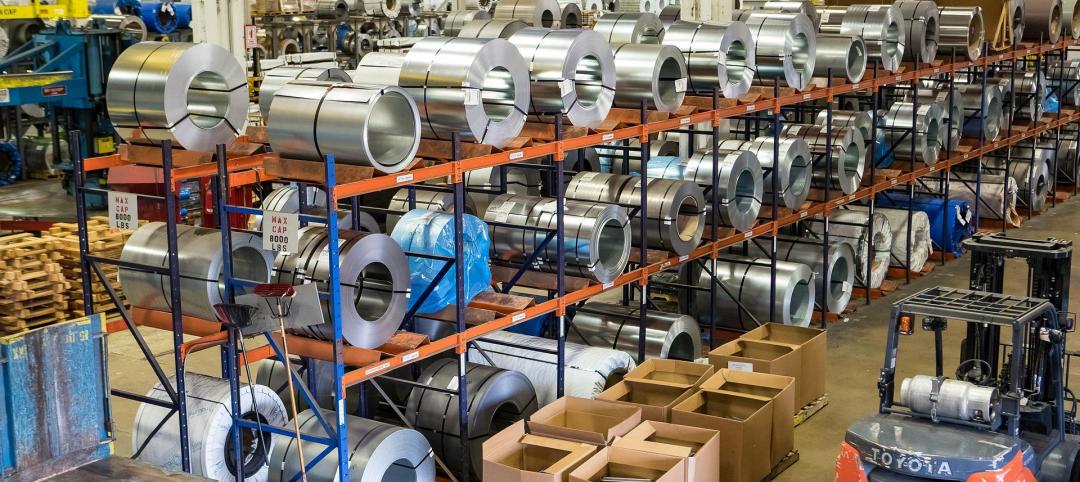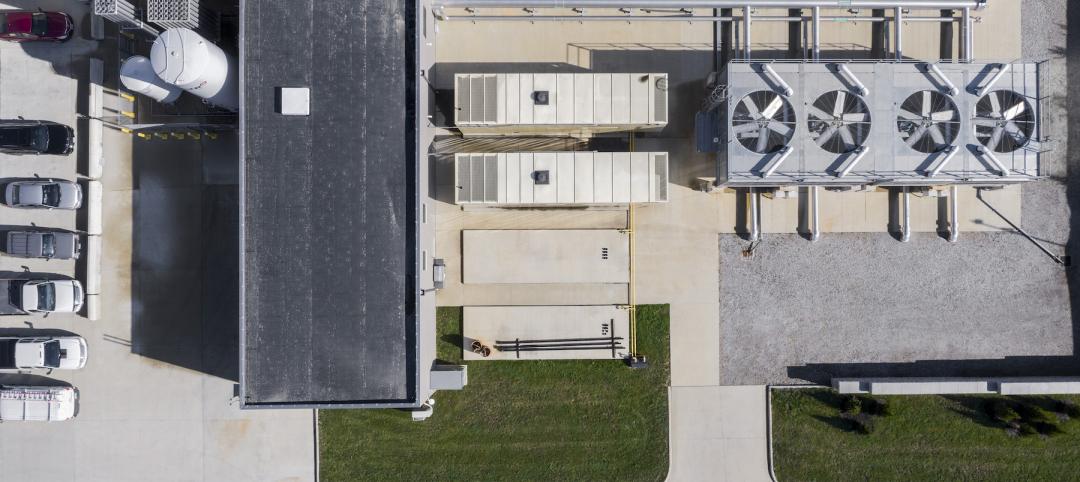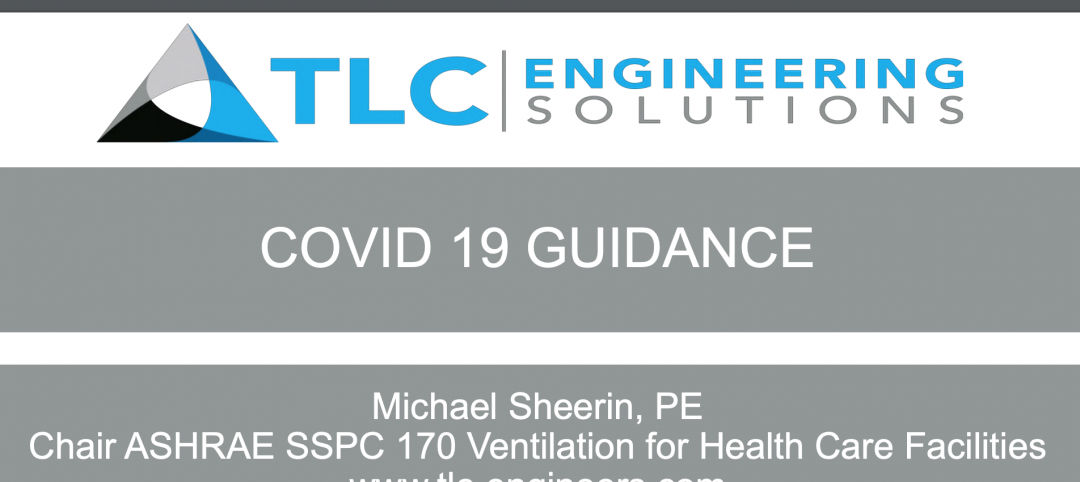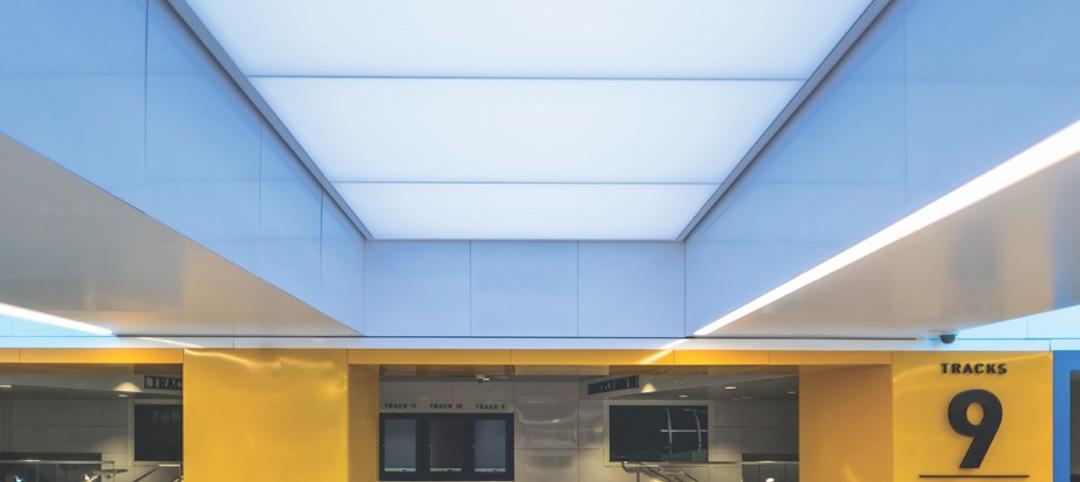The last two decades have introduced new considerations to building owners and developers when planning updates to existing commercial structures or investing in new construction. When accounting for the total cost of ownership and the potential return on investment, owners and developers should consider total energy usage, the lifespan of building systems equipment, the recruitment and retention of occupants, and lease rates.
1. Energy usage and efficiency
According to the U.S. Environmental Protection Agency, the average commercial building wastes 30% of the energy it consumes. This loss is due to equipment use when it isn’t needed—such as lights being left on in empty portions of the building—and outdated technology that consumes more energy than newer models.
In cold climates, temperature control accounts for a majority of the electricity use in commercial buildings. Traditionally, commercial HVAC systems achieve temperature equilibrium by balancing the amount of cold and hot air individually pumped into the building. Also problematic are HVAC systems that require heating and cooling throughout the entire building regardless of occupancy levels.
Today’s technology has produced systems that address both of these issues. Unlike comparable unitary equipment, variable refrigerant flow (VRF) technology provides different speeds of energy flow, rather than a traditional on/off feature, so that the optimal temperature is achieved more efficiently. Studies show that VRF systems decrease energy use anywhere between 15% and 42% compared to traditional HVAC systems. Similarly, a Minnesota state field study on VRF reported 30-40% reduced energy usage during the cold weather months.
Advancements in VRF technology have also substantially improved the reliability and precision of these systems. For instance, Mitsubishi Electric VRF systems are capable of producing simultaneous cooling and heating rather than each individually. This eliminates fluctuating around the optimal temperature by heating, then cooling, then heating again when using traditional units.
The Internet of Things (IoT) allows for the integration of occupancy sensors so electrical systems—including lighting, HVAC, elevators and escalators—are only used as needed. These systems provide real-time feedback on electricity use, and some are capable of predicting occupant habits. According to the Building Owners and Managers Association (BOMA), replacing products that are 10 years old or older has a tremendous impact on the energy use of the system due to the changes in technology within the last decade.
2. Lifespan of equipment
In the past, building owners could expect their systems—such as HVAC units—to last 15+ years with little upkeep. Today’s technology is more sophisticated, with more moving parts. While older systems may deal with neglect, such as dirty air filters and blower wheels, expecting the same from a new unit can decrease its life expectancy and increase the likelihood of downtime. Scheduled maintenance before a problem occurs helps with the upkeep of units and product lifetime expectancy.
The advantages of investing in products whose manufacturers provide regularly scheduled maintenance are three-fold: products will last longer, decreasing the need for replacement within 20 to 30 years; increased tenant retention and satisfaction by minimizing instances of system downtime; and increased value of the building in the instance that you want to sell.
3. Tenant recruitment and retention
The recruitment and retention of tenants and employees has become a priority in today’s commercial real estate market. With an increase in options—due to low unemployment rates, flexibility in where employees are able to work, and an abundance of available office spaces—the stakes have been raised for building owners and developers. Retention, in particular, is a hot-button topic for building owners as they consider the total cost of loosing a key tenant—from lost monthly income, to the space fitout and upgrade costs, to recruitment and advertising expenses.
For tenant-paid utilities, showing a decrease in energy cost due to energy-efficient systems and appliances can have a positive effect on tenant recruitment and retention. Even if the energy saved doesn’t make up for additional costs, tenants are more apt to lease spaces where the owner is energy-conscious.
There is also the reliability of the building systems: Frequent downtime of units can cause frustration among building occupants and lost revenue and productivity for tenants. An hour without power can cost companies more than $100,000 in revenue. Investment in products from Mitsubishi Electric can help reduce such risks and provide better quality and greater efficiency.
4. Lease rates
Installing the latest building systems in a new or renovated building will provide immediate ROI in the form of increased lease rates. When negotiating, tenants are more likely to accept a higher lease rate if it means they have updated equipment, especially if they will be saving money through less expensive operating costs.
Although the trend shows leases are getting shorter, tenants want to avoid the costly, stressful, and time-consuming moving process as much as possible. Therefore, they are more likely to sign or re-sign a lease if they haven’t experienced any negatives—such as repetitive elevator downtime—and the system cost savings show up on their monthly bills.
The times are changing, but that isn’t a negative. Today’s building systems work harder, smarter, and with less energy than ever before. Considering the long-term profitability of your building can set you up for success.
Related Stories
Green | Jul 26, 2022
Climate tech startup BlocPower looks to electrify, decarbonize the nation's buildings
The New York-based climate technology company electrifies and decarbonizes buildings—more than 1,200 of them so far.
Building Materials | Jun 20, 2022
Early-stage procurement: The next evolution of the construction supply chain
Austin Commercial’s Jason Earnhardt explains why supply chain issues for the construction industry are not going to go away and how developers and owners can get ahead of project roadblocks.
Sponsored | HVAC | Jun 14, 2022
Healing the urban fabric: The surprising impact of MagicPak HVAC
The Legends at Berry active adult housing complex in St. Paul, Minnesota helped transform a former industrial site into a thriving residential campus. MagicPak All-in-One® HVAC Systems provided the energy-efficient heating needed to handle extreme Minnesota winters while enabling architects to create an inviting home environment—and even qualify for additional funding incentives.
Multifamily Housing | Apr 7, 2022
Ken Soble Tower becomes world’s largest residential Passive House retrofit
The project team for the 18-story high-rise for seniors slashed the building’s greenhouse gas emissions by 94 percent and its heating energy demand by 91 percent.
M/E/P Systems | Jan 27, 2022
Top 5 building HVAC system problems and how to fix them
When your HVAC system was new, it was designed to keep the indoor environment comfortable, functional, and safe. Over time, that system can drift out of alignment, leading to wasted resources, excessive energy consumption, and reduced occupant comfort.
Resiliency | Jul 15, 2021
A new report urges federal investment in healthier buildings
The National Institute of Building Sciences also calls for code changes and greater cooperation between building owners and the AEC community.
Coronavirus | Apr 1, 2020
TLC’s Michael Sheerin offers guidance on ventilation in COVID-19 healthcare settings
Ventilation engineering guidance for COVID-19 patient rooms
Sponsored | HVAC | Feb 3, 2020
Reliable Building Systems Increase Net Operating Income by Retaining Tenants
Tenants increasingly expect a well-crafted property that feels unique, authentic, and comfortable—with technologically advanced systems and spaces that optimize performance and encourage collaboration and engagement. The following guidance will help owners and property managers keep tenants happy.
Sponsored | HVAC | Jan 6, 2020
Maximize Energy Efficiency in Class A Office Buildings With Modern Building Systems
Energy-efficient building design starts with the building envelope, but the building systems have a tremendous impact on energy use as well.
75 Top Building Products | Dec 16, 2019
101 Top Products for 2019
Building Design+Construction readers and editors select their top building products for the past 12 months in the fourth-annual 101 Top Products report.













